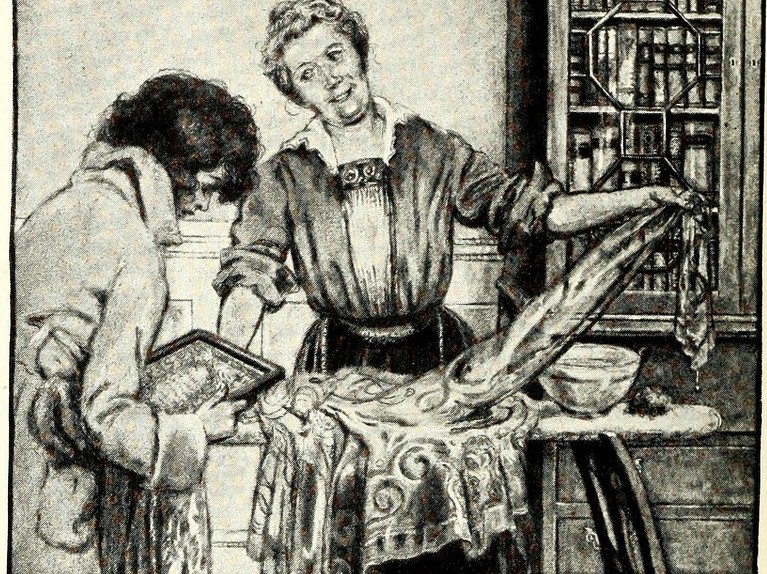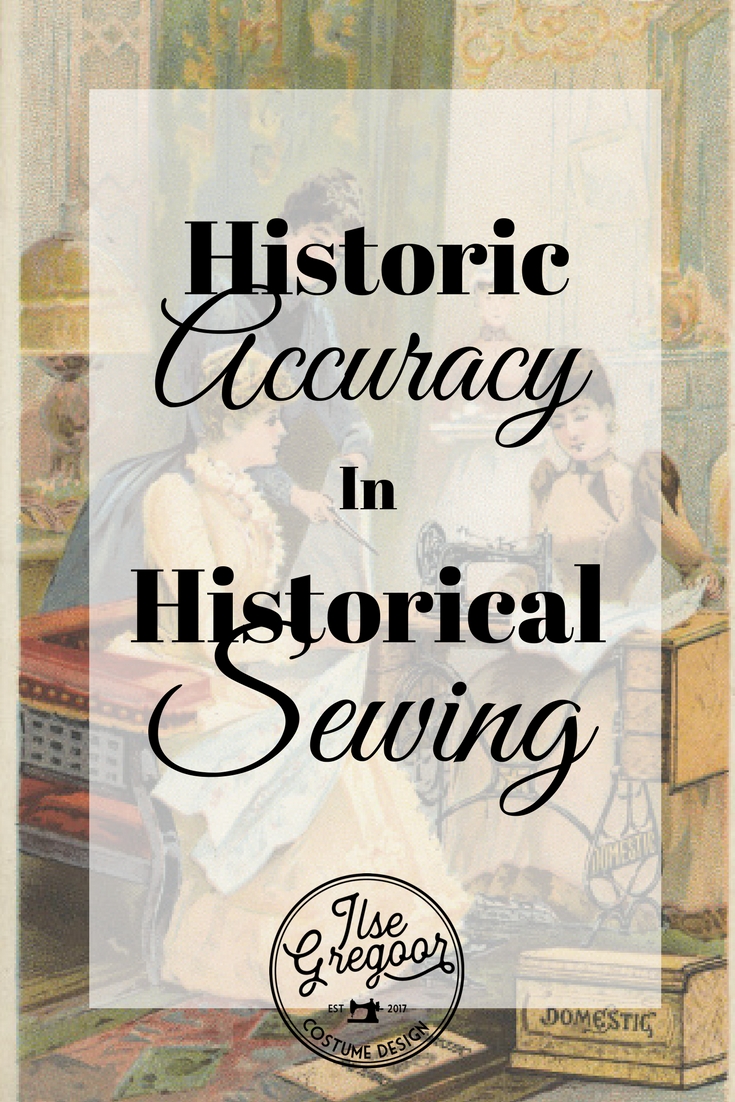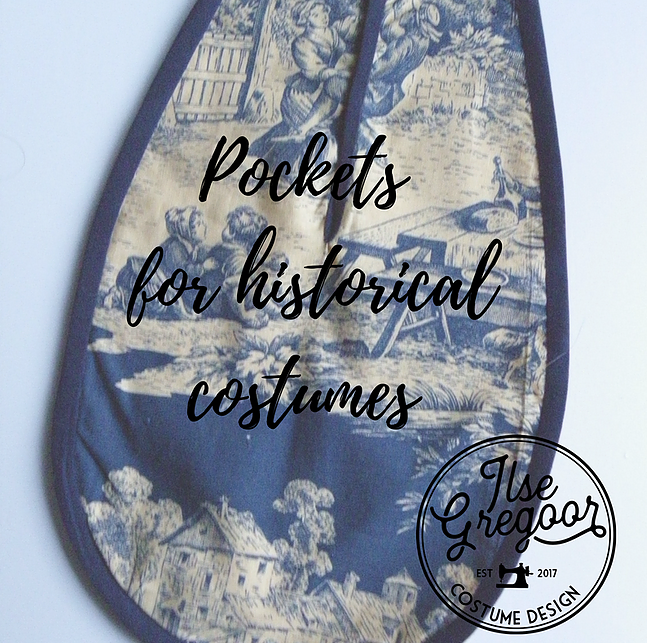Historical Accuracy in Historical Sewing
Whenever I make a new historical costume, I love researching everything about it. I want to know historical techniques, fabrics, styles and undergarments, so I can make my costume as historically accurate as possible. But let’s talk about that for a second: “historical accuracy.”

If you are sewing a historical costume, and you achieve the perfect historical silhouette, you might feel that your outfit is historically accurate. But then someone comes along and points out that you used the wrong kind of fabric, and that’s not historically accurate. Next time, you might chose a fabric that was used back in the days, but then someone else points out that you have sewn the dress on a sewing machine. And since in the period you are portraying, dresses would have been sewn by hand, yours should be too. But when you sew your dress by hand, someone might comment that the number of stitches you used per inch is wrong for that period. And even when you get that right, you are still using modern materials. These are manufactured differently to those 200 years ago, and can therefore never achieve the perfect historically accurate result.
As you can see, this is a slippery slope. Most of us put so much work into our dresses. Hours and hours of hard labor, and an even bigger amount of love. And we do the best we can, but we all have limitations. This might be the budget you have to spend on an outfit, because you have three kids to feed. This might be the time you have to actually sew it, because you work a fulltime job. Or maybe you are just starting out, and this is your first costume. So you can’t have the same knowledge as someone who has been doing it for over 20 years.
But that is ok!
I feel like sometimes we as a community get a bit carried away when striving for “historical accuracy”. Most of the people sewing historically inspired garments do so because they love it. They have a passion for history, clothes and sewing. And because we are so enthusiastic about it, and want to share our knowledge, we might sometimes end up accidentally insulting someone’s hard work, because they focused on a different aspect of historical clothing.

Not everyone has the same goals in historical costuming. If you are a historical re-enactor, educating the public about history, obviously you have to think about historical accuracy a lot, and try to get as close to it as you possibly can. But other people might have different goals. Some just want to achieve the correct look, but don’t really care if you use a serger for finishing the seams. And some people just want the pretty dress and don’t care about historical accuracy at all.
Does that mean we should stop striving to become more historically accurate with our sewing? No, of course not! Learning more about historical fabrics and techniques and learning how to apply them is so interesting. I just don’t think we should live with the illusion that there is some kind of gold standard. Some kind of “complete and perfect historical accuracy” that we have to (or are even able to) achieve.
Like many things in life, “historical accuracy” isn’t either black or white. In my opinion, it’s more of a scale. I think the question “is this garment historically accurate?” shouldn’t be answered with either a yes or no. I think it should spark a conversation about the history of clothing and sewing. It should be a starting point for a conversation about historical costumes. It should be an exchange of information, not a judged contest.
Maybe you paid particular attention to the correct silhouette, but you chose a polyester fabric. Maybe you made this particular garment to perfect your hand sewing skills, but it doesn’t fit you quite the way it historically would have. And either is fine. It is not that one is better than the other, because it paid more attention to historical details. It is just different, because we are all different.
Because of this, I try never to just say whether or not an item I made is historically accurate, and leave it at that. I try to describe what I found in my research, and where I chose to do it differently. (In my case, that is mostly the fact that I use my sewing machine for everything.) I also pay attention to this with every item I make for my Etsy shop. In the description of every item that I sell, I ask the question “How historically accurate is this item?” And to answer that I describe what I know about the historical accuracy of the four element of the item: the design, the materials, the techniques and the time period.
For Example: In my description of these pockets I sell in my etsy shop it says:
“How Historically accurate is this item?
Design: The design of this item is copied from existing and researched historical pockets. The Victoria and Albert Museum has published a research about how these pockets were made. All of them were sewn with two layers of fabric (which could be decorated in different ways) with the edges and slit bound in bias binding. I made this pocket according to that research. The size of the pocket is smaller than what would have been common.
Materials: Linen would be the material which was most often used for pockets, since it was the cheapest and widely available, but when the pockets were made of fabrics with a printed design they were made of cotton. So the use of cotton in this pocket is historically accurate.
Techniques: For the seams that are not visible, a sewing machine was used, which is not historically accurate. But all the finishes on this item were hand sewn, which is how it would have been made in those days.
Time Period: Pockets like these would have been in use from the 17th century to the late 19th century.”
Because of this, everyone buying one of my products can decide for themselves if this item fits into their idea of historical accuracy. For the example given above, someone who wants a pocket based on a historical design might buy it from me. But someone who wants all their items to be handstitched will look for something else.
Everyone making historical costumes does so with their own background, their own interests and their own knowledge. If we start answering the question about historical accuracy with explanations instead of a simple yes or no, everyone will benefit. Conversations about our outfits can become exchanges of information, so that everyone can learn from each other, and everyone can showcase their own unique skills. Because after all, it is a passion, a joy, and it should stay enjoyable.
I would love to see your creations of historic costumes, so please don’t be shy and join my Historical costumers group board on Pinterest. There we can all see each other’s outfits. And if you are stumped for inspiration for your next dress (or if you just love pretty pictures) you can join my email newsletter for free fashion plate printables each month.






